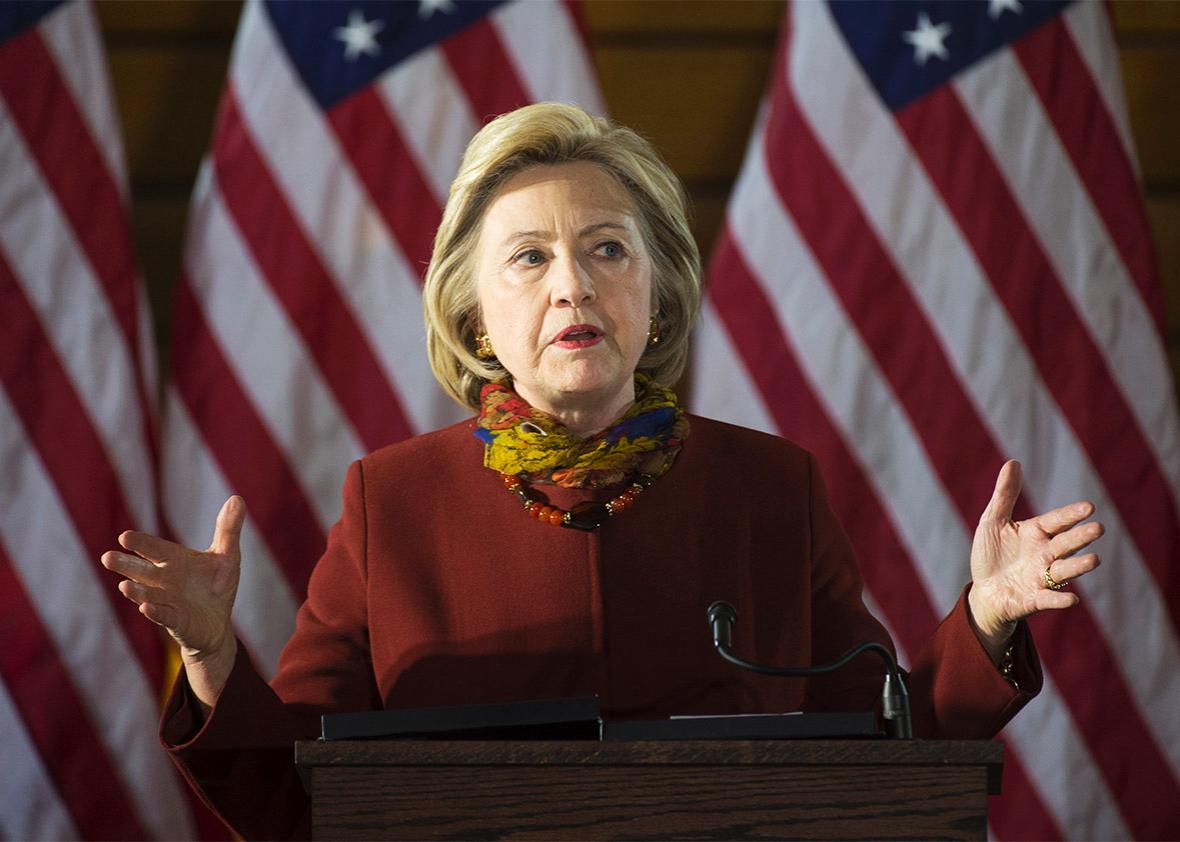In 1972, a young Hillary Rodham—working for Marian Wright Edelman’s Washington Research Project (later the Children’s Defense Fund)—drove into Dothan, Alabama to investigate school segregation. “The future Mrs. Clinton,” writes Amy Chozick for the New York Times,” had been sent “to Alabama to help prove that the Nixon administration was not enforcing the legal ban on granting tax-exempt status to so-called segregation academies, the estimated 200 private academies that sprang up in the South to cater to white families after a 1969 Supreme Court decision forced public schools to integrate.”
It was a formative experience for the then-law student, who continued her work for Edelman after finishing school, before moving to Arkansas with Bill Clinton. And, as Chozick points out, it’s a recurring note in her rhetoric today. It informed her response to Black Lives Matter activists earlier this year, as well as her public remarks on issues of racial inequality. “The truth is equality, opportunity, civil rights in America are still far from where they need to be,” said Clinton in a speech near Ferguson, Missouri this summer. “Our schools are still segregated, in fact, more segregated than they were in the 1960s.”
But there’s a disconnect. For as much as this changed Hillary Clinton—for as much as it’s influenced her present campaign for president—it hasn’t influenced her policy agenda.
The past 20 years have witnessed a major retreat from desegregation efforts. Lawmakers have backed away from pro-integration policy while courts have hobbled or even stopped enforcing desegregation orders. The result is that, once again, school segregation is the norm in America. Thirty-nine percent of black students attend schools that are more than 90 percent minority up from 34 percent in 1991, according to the Economic Policy Institute. Just 28 percent of black students attend schools where more than one-third of their peers are white. Fifty-nine percent of black students attend schools where a plurality (at least 43 percent) of their fellow students are low-income, and in struggling cities like Detroit, the typical black student is in a deeply impoverished, hyper-segregated schools with few if any white students.
Overall, the average white student goes to a school that’s 73 percent white, while the average black student goes to one that’s 49 percent black and the average Latino student attends one that’s 57 percent Latino (to that point, Latino students are arguably the most segregated in the nation).
And this segregation comes with attendant advantages for white students—who, in the aggregate, attend the most resourced schools—and attendant disadvantages for black Americans and other students of color. In a 2012 report, the left-leaning Center for American Progress found that for every 10 point increase in the share of minorities at a school, per-pupil spending decreases $75.
If you could compensate for segregation with more resources this wouldn’t be a crisis. But this approach—“separate but equal” in everything but name—doesn’t work. The only thing that truly works to improve schools for all students, notes the New York Times’ Nikole Hannah-Jones for This American Life, is desegregation.
Which brings us back to Clinton. Integration is personally important to her, but it hasn’t made a mark on her agenda. There’s no indication that the Clinton campaign has any plans or even interest in reversing the trend toward resegregation. In fairness, many of the details of education policy happen on the state and local level, and in the absence of new law, the federal government has limited authority and ability to influence the factors that determine school composition. With that said, the federal government isn’t bereft of tools to incentivize integration. Right now, for instance, the Obama administration is working to encourage integration in housing, which has a direct impact on increasing diversity in public schools.
More broadly, high-profile presidential candidates have the ability to set and influence agendas for their party. John Edwards’ advocacy in 2008 pushed health care reform to center stage in the Democratic primary; Donald Trump has turned the Republican primary into an arms race on immigration restriction; if she wanted, Clinton could make school integration an issue for her campaign, and by extension, an issue for the national Democratic Party.
The challenge—the chief reason no national Democrat, much less Clinton, will openly pursue integration—is that it could deeepen the party’s problem with white voters, from the blue collar workers who are a declining share of the Democratic electorate to the college-educated whites who are key to any national victory. Rural or urban, liberal or conservative, neither school nor housing integration is popular with white voters, full stop. And any Democrat that makes school or housing integration a priority risks losing critical voters.
Which leaves us where we are: With Democrats that voice rhetorical commitments to school and housing integration but avoid all but the most marginal policies, working—instead—to try to humanize “separate but equal.”
